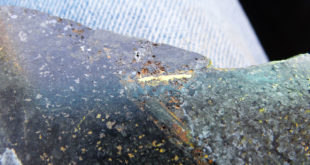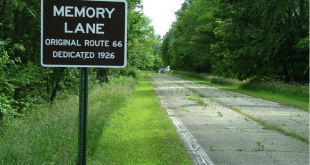As part of my summer reading I delved into 3 books: “Irrational Exuberance” by Robert J. Shiller, “The Bubble and the Bear – How Nortel Burst the Canadian Dream”, by Douglas Hunter and recently, “Adventure Capitalist” by Jim Rogers. As well, I attended the NY Gold Investment Show at Times Square back a couple of weeks ago, and so this “Straight Talk” is written with impressions from these sources rattling around in my head.
The NY Show was something that may turn out to be a watershed event. The last time I witnessed such excitement at a show was back in NY at the same venue in 1996. Oh those heady days! I think there were probably double the number of exhibitors back then, but the auditorium was equally as packed as it was a few weeks ago. A few months prior to that I had manned a booth for a client at the Las Vegas gold & diamond show, and the atmosphere was similarly electric.
A subject that has always fascinated me is market dynamics. What is it that gives a market legs? Why is it that the NY show had to be cancelled 2 years ago for lack of interest, and yet a few weeks ago there was standing room only in the auditorium?
I have a different skew on the gold share market because my entire working career has been spent as an exploration geologist. I’ve been through the boom and bust cycle too many times than I really like to recall, but I believe it has given me some insight into where we have been and where we are going. The majority of commentators look at the gold market in terms of macroeconomic events or political upheaval. The vast majority of folks talk about “safe haven buying”, the trade deficit, the declining world gold production scenario, inflationary US government spending, terrorism fears, the personal and corporate debt problems, the economic malaise in the world’s three largest economies – the USA, Japan and Germany; I could go on and on. Each one of these factors is gold bullish, and taken collectively they make the conjunction of market forces we’re witnessing incredibly powerful. There is a certain expectation/inevitability out there for a rising gold price. I predicted it three years in some of my first web scribblings – but I don’t pretend to know any more than someone who simply pays attention, reads the news, and bones up on a bit of economic history now and then.
And so, there is pretty much a consensus out there that gold is going higher. Gold Fields Mineral Services and Merrill Lynch recently agreed, though they may be just jumping on the bandwagon……okay, here’s the nitty gritty of the thing and where we get into “market dynamics” – the phrase Jumping on the Bandwagon – agreeing with market consensus, “joining the herd”. What a market really needs to move is (1) a receptive audience and (2) a growing awareness and expectation of upward movement in price. When that happens, people begin to buy into the market and it can become a “selffulfilling prophecy”. The market goes upwards because people are buying. This reinforces confidence, and then it goes up more, in a feedback loop. Such can be the nature of speculation in bull markets.
We have in latter years seen the tech bubble, the housing bubble, the bond bubble – all of which are in various stages of unravel depending on where you live in the world. The refinancing market in the US and UK is pretty much finished but people still borrow to purchase more expensive properties, in the expectation that the market will go higher – again, a feedback loop. However, any economist will tell you that eventually the market will saturate, and highly leveraged individuals – if they lose their jobs – will have to downsize, cutting their debt and their lifestyle expectations. This sort of phenomenon can become another feedback loop where lower house prices and a glut of properties on the market will undermine bullish expectations and turn sentiment negative. In worst case scenario this can start a downwards “cascading effect” where one bubble burst can spill over into other markets. This is what happened when the NASDAQ bubble burst and the American consumer started to pull in his horns. In a speculative bubble valuations can far outpace market norms. The Bush’s tax cuts, and defense spending has poured a lot of money into the US economy, and there are several mini-Bubbles out there – all of which have developed to my mind not because certain businesses have suddenly overnight become spectacularly profitable, but because people are looking for somewhere to put their money. Some want a decent return on investment. Many are looking to recoup dotcom losses and restore their retirement nest eggs.
So we live in a very special time in terms of market dynamics – where there are real sound macroeconomic reasons for the gold price to increase, and an investing public perhaps more receptive to the gold story “just because it is going up”. But let’s get back to the recent NY Gold Show. There were over 3,000 attendees at that show. The largest mining convention in the world, the Prospectors and Developers Convention (PDAC) in Toronto, held in March, has attracted I think 8,000-9,000 or so patrons at its peak back in the mid-1990’s. Typically it takes a lot to get the New York crowd interested in gold. Though the PDAC conventions have been an industry mainstay since the 1930’s, I can’t remember an investment show in New York before the early 1990’s. Back in 1999 and 2000 when you could almost hear crickets in the Toronto Convention Centre during the PDAC you couldn’t find a heartbeat to any gold story in New York. No one cared. No audience. New York is the hub of international finance. The mining conventions and trade shows in Canada over the last year have been enthusiastic. If you can transfer that sort of enthusiasm from Canada to New York, then you have “frothiness” and with a frothy market you can do many things.
Why do so many international mining plays originate from Canada? Canada is the preeminent financier of mining and exploration projects. More money is raised in Canada than anywhere else. It was not always thus. In the 19th century worldwide mining enterprises were funded largely from London or New York; the London financiers looking after projects in the Empire, as well as South America and Russia. New York (and San Francisco) financed mining projects in the American West including Cripple Creek in 1894.
With the discovery of the Klondike (1896), Cobalt (1904), the Porcupine district (Timmins) (1905), and Kirkland Lake (1911), focus began to shift to Toronto as the financial mining centre. This is attested by the large number of colourful old collectable share certificates out there. By the time of the Second World War, mining expertise had concentrated in the maturing gold camps of Timmins, Red Lake, Yellowknife, and Kirkland Lake. Explorationists hunted close to home and found several world class mineral deposits, including Elliott Lake (uranium) in 1953 and the huge Kidd Creek polymetallic massive sulphide in 1963. The Elliott Lake and Kidd Creek discoveries spawned tremendous staking rushes, only to be dwarfed by the huge Hemlo gold staking rush on the north side of Lake Superior in 1979-82. By this time, Canada had two major centers of mining finance – the staid Bay Street in Toronto, and swashbuckling Howe Street in Vancouver.
Canadian junior companies came up with a double handful of very profitable world class discoveries in the ‘80’s and ‘90’s: Eskay Creek (gold & silver, 1988) Lac de Gras (diamonds, 1990/1991), Voisey’s Bay (nickel, 1993), and Pierina (gold, 1995). Each of these discoveries became spectacular home runs for the companies making the finds. Of course the biggest story of them all was Bre-X.
Bre-X was a spectacular market phenomenon, rising from about 50 cents in January 1994 to a spectacular $280 (on a pre-split calculation) in early September, 1996. The curtain came down on it in May, 1997 when it was delisted. Really, the party ended when geologist Mike de Guzman took a header out of the helicopter over Busang in March, ’97. I won’t reiterate the whole sad depressing story of the fraud that was Bre-X, rather I want to concentrate on the market phenomenon that was Bre-X.
Bre-X is little discussed these days in mining circles because, frankly, the industry is collectively embarrassed that it happened and wish it would go away. Folks like Robert Shiller who wrote “Irrational Exuberance” have perhaps never heard of it and haven’t commented about it, so you don’t see much about it in discussions of market bubbles, but Bre-X was the tech bubble, the bond bubble, and the housing bubble in miniature – and it was the first; it was mini-Enron. The ground had been prepared by numerous, extremely profitable world class discoveries immediately proceeding it. The Diamond Fields takeout for $C4.3 billion (cash and stock) and the Arequipa takeout for $C1.1 billion were almost concurrent. In other times, Bre-X would have just fizzled after a month or so of life and been regulated to the sanctions pages in the OSC files, and the back pages of the Northern Miner. You may argue that Bre-X only had legs because of the grandiose claims of mega-gold ounces by management, but such empty statements can’t gain any currency unless the market is set up to be receptive. If you look at Diane Francis’ book “Bre-X – the Inside Story”, you’ll see in the last part of the book that a very big factor in the Bre-X market move was the internet (which I remind you, you are staring at right now). Internet chat rooms were responsible for creating and disseminating market buzz. At most times emotional, uncritical, biased, inaccurate, or deliberately misleading, the internet allowed the Bre-X story to travel farther, and faster, than it ever could have (or should have). In this way a little no-account exploration company run by a discharged bankrupt was able to get a market cap of $C6 billion.
The other evening I had drinks with a savvy mining chap who thought something like Bre-X would happen again. My own opinion is that it is too fresh and too recent a story to happen again. Anyone who starts to talk about mega-ounces in the ground will be under the microscope by the regulators, the analysts, the fund managers, and the investing public at large. An abundance of rules have been put in place to ensure that it doesn’t happen again. At the same time, those who recommend stocks to clients are also under scrutiny. Gone are the days of expensive junkets for analysts paid for by the companies. Gone also are the days of non-disclosure by analysts when they make media comment.
What has happened recently is that junior companies are getting funding to go out and explore, and exciting new discoveries are coming to light. When the gold bull market first started about two years ago the majority of plays out there were reduxes of old stories, because it was quicker and cheaper to put a new spin on an old story and send it out the door to prospective investors. Finding your own takes innovation, and a lot of time. Many junior companies therefore got a hold of mining claims with flashy assays and simply resampled them. Companies who play this game hit the glass ceiling pretty quickly because they can’t grow the resource, and they can’t wheedle money out of the investment savvy. You might remember a number of companies who picked up abandoned mines and said they were “highly leveraged to the price of gold” on the basis of what was still left in the ground. Well, if these were such deals a few years ago why didn’t Newmont pick them up?
We are now into Act 2 Scene 1 of the market bull. There has been so much money raised by junior mining companies, and so much activity now out there that it is highly likely someone will at some time come up with a world class gold discovery. If history is any example, when junior companies get bucks to explore, someone always makes a discovery. If we’re lucky we’ll see a nice string of discoveries like we saw from 1990- 95. They won’t happen over night, because it takes time and perseverance to find mines. However, I do predict that when it happens we will see the good news drag along the entire gold mining sector. The media will get a hold of it, and even if the mainstream choose to ignore it, word will filter out through the internet to the chat rooms. Already the financial Wizards of Wall Street are starting to recognize the gold story, hence the attendance at the NY Gold Show. You can try to ignore the gold story, but when the best performing mutual funds are Precious Metal Funds, and that appears headlined in black and white in Barron’s and the Wall Street Journal the powers of denial of even the most gold-bearish individual start to fall away. It starts to get into the tricky business of “fiduciary responsibility” if you manage a high net worth individual’s money and purposely ignore gold. Money managers will start to feel the heat.
Even better, you may have spotted a reference on one of the mining websites to an article by Ralph Bullis in Exploration and Mining Geology, vol. 10, no. 4 (published July, 2003), entitled “Gold Deposits, Exploration Realities, and the Unsustainability of Very Large Gold Producers”. This article is excellent and I recommend everyone to find a copy of it. Basically, Ralph says that the very senior gold mining companies are cooked because they too aggressively grew their businesses and can’t replace ounces through exploration fast enough to grow – or even stay level. If Bullis is right (and I think he is, see my Straight Talk # 14, published in February, 2002), the next major gold discovery by a junior will end up subject of a bidding war that will look like the Gunfight from the O.K. Corral. We have had a dry spell in terms of gold discovery for many years, and the appetite of the seniors for quality projects will be ravenous.
So, whereas Bre-X thrived against the backdrop of a number of mega-huge world class discoveries through the late 80’s and early ‘90s, today the backdrop is an improving gold price and lack of viable investment alternatives that could produce circa 1998-99 dotcomlike returns. Junior gold discoveries have always had the ability to turn worthless moose pasture into acres worth millions or billions. This is where the true importance of exploration lies – the discovery factor, and this is why macroeconomic models, though important, are not the driving force behind the substantial percentage gains sometimes attained by junior golds. The gold price though is important in jumpstarting the process. With a gold price below $300/oz it is highly unlikely that your discovery will be economic, but the odds get much better if you’re dealing with a $400/oz price, and that’s why geologists like myself begin to explore. If the price goes higher a discovery becomes even more lucrative, and with expectations and projections of a higher gold price the Senior Gold Producers will be willing to pay that larger a premium to secure the best plays. I suspect that the very best junior stories will be “must haves” for the biggest gold players.
And so, in closing, we indeed live in special times. Will we ever see Bre-X type valuations for legit junior gold plays? Perhaps not, but Bre-X did demonstrate that feeding frenzy market behaviour is possible in the junior gold world. It set a precedent, though a notorious one. Investors around the world have demonstrated that they can be “irrationally exuberant” not just once, but again and again and in very recent times. As the old prospector’s saying goes, “We will just have to see how it all pans out”.
News you can use
If you are doing research on companies and want to look for expunged past sins on now deleted webpages look up the following site and plug the URL of the company in question into the “Wayback Machine”. You’ll be surprised what you can find!
 Straight Talk On Mining Insights on mining from economic geologist Dr. Keith Barron.
Straight Talk On Mining Insights on mining from economic geologist Dr. Keith Barron.




